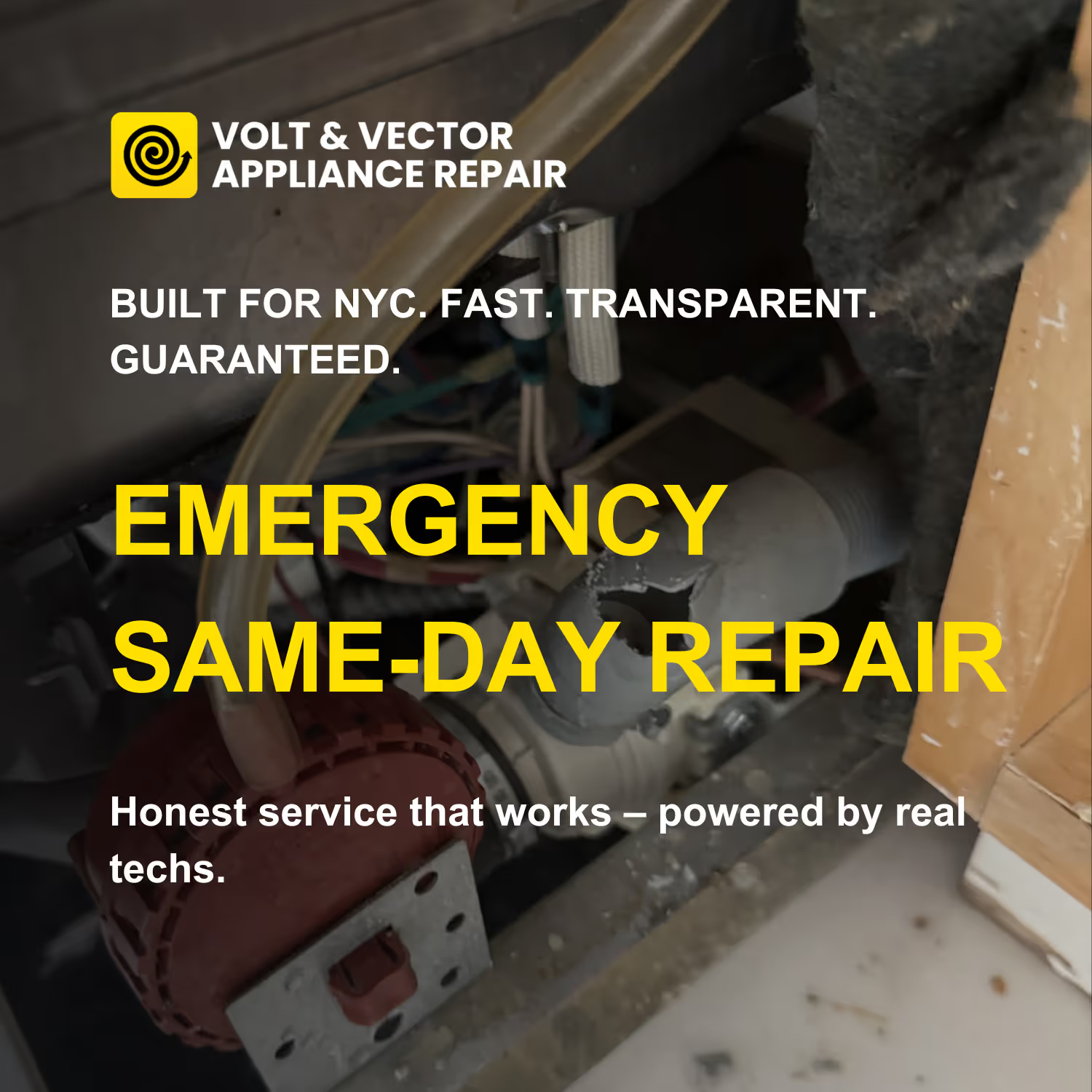ZIP coverage — Brooklyn, Manhattan & select Queens
Use the ZIP code checker to see if we can come out to your building. If your ZIP is listed, we can usually offer same-day or next-day appliance repair, depending on parts and schedule. If your ZIP code is outside our current service area, you can still reach out — in some cases we may be able to help, or recommend a trusted partner nearby.
Schedule your same-day Bosch washer repair service today across Brooklyn & Manhattan. We're here to help.
Experiencing issues with your Bosch washer can lead to frustration and disruption in your daily routine. Unexpected leaks, odd noises, or a malfunctioning door lock can leave you feeling overwhelmed as laundry piles up.
At Volt & Vector, we specialize in diagnosing and swiftly resolving Bosch washer issues across Brooklyn and Manhattan. Our team of experts is equipped to handle everything from a simple fix to more complex problems, ensuring your appliance is up and running smoothly.
With a $99 diagnostic fee that is credited to your repair and a comprehensive 180-day warranty on all parts and labor, you can rely on us for dependable service and peace of mind.
Pro Tips to Maintain Your Bosch Washer
Tip 1: Regularly check and clean the door seal to prevent leaks. Wipe it down after each use to remove any residues that could cause mold or deterioration.
Tip 2: Ensure that the door lock mechanism is functioning properly by avoiding overloading the washer. This will help prevent strain on the lock and potential malfunctions.
Tip 3: Tighten any loose screws and ensure the washer is level to reduce noise and vibration during the spin cycle. Using vibration-dampening pads can further stabilize the machine.
Tip 4: Periodically inspect and clean the drain filter. A clogged filter can lead to leaks and inadequate drainage, impacting the overall performance of your washer.
Frequently Asked Questions
Q: What does the E16 code mean?
A: The E16 code indicates a Signal Fault, which means the washer has trouble communicating with its components, often due to loose wiring or a faulty control board.
Q: My Bosch washer is leaking, what should I do?
A: A leaking washer can be caused by several factors, including damaged hoses or door seals. It’s important to address this promptly to prevent further water damage.
Q: What does the E24 code represent?
A: The E24 code reflects a drainage issue, often due to a clogged drain hose or faulty drain pump requiring immediate attention.
Q: Is the door lock issue common with Bosch washers?
A: Yes, door lock problems can occur and may prevent the washer from operating correctly. It's advisable to have it inspected if you notice any issues.
Volt & Vector provides expert Bosch washer repair services across Brooklyn & Manhattan. Common issues include leaking and noise, with a $99 diagnostic fee credited to repair and a 180-day warranty for your peace of mind.
Expert Advice: Repair or Replace?
Repairing your Bosch washer is often the most economical option, especially if it is less than 10 years old and experiencing common problems like a faulty door lock or pump failure.
Replacement may be beneficial if your washer shows signs of age such as:
- Over 10 years of age
- Frequent breakdowns
- Parts are no longer available
- Planning a remodel that requires a new unit
Understanding Bosch Error Codes
Code E16: Signal Fault: The washer is having trouble communicating with its components.
Possible Causes:
- Loose or damaged wiring
- Faulty control board
- Disconnection in the door lock mechanism
User Actions:
- Check for loose connections in the wiring harness.
- Inspect the door lock for any visible damage.
- Reset the washer by unplugging it for a few minutes.
Code E21: Signal Fault: This signifies a problem with the water supply or internal sensors.
Possible Causes:
- Water supply turned off
- Faulty water inlet valve
- Clogged inlet filter
User Actions:
- Ensure the water supply valves are open.
- Examine the water inlet valve for any signs of damage.
- Remove and clean any filters on the inlet hose.
Code E24: Signal Fault: This indicates an issue with the drainage system or communication.
Possible Causes:
- Clogged drain hose
- Faulty drain pump
- Blockage in the filter
User Actions:
- Inspect and clear any blockages in the drain hose.
- Check the filter for debris and clean it if necessary.
- Try running a drain cycle to see if the issue resolves.
Common Bosch Washer Problems We Service
Not spinning correctly
Leaking water
Door lock malfunction
Unusual noise during cycles
Vibration during operation
Leaking
Door Lock
Noise/Vibration
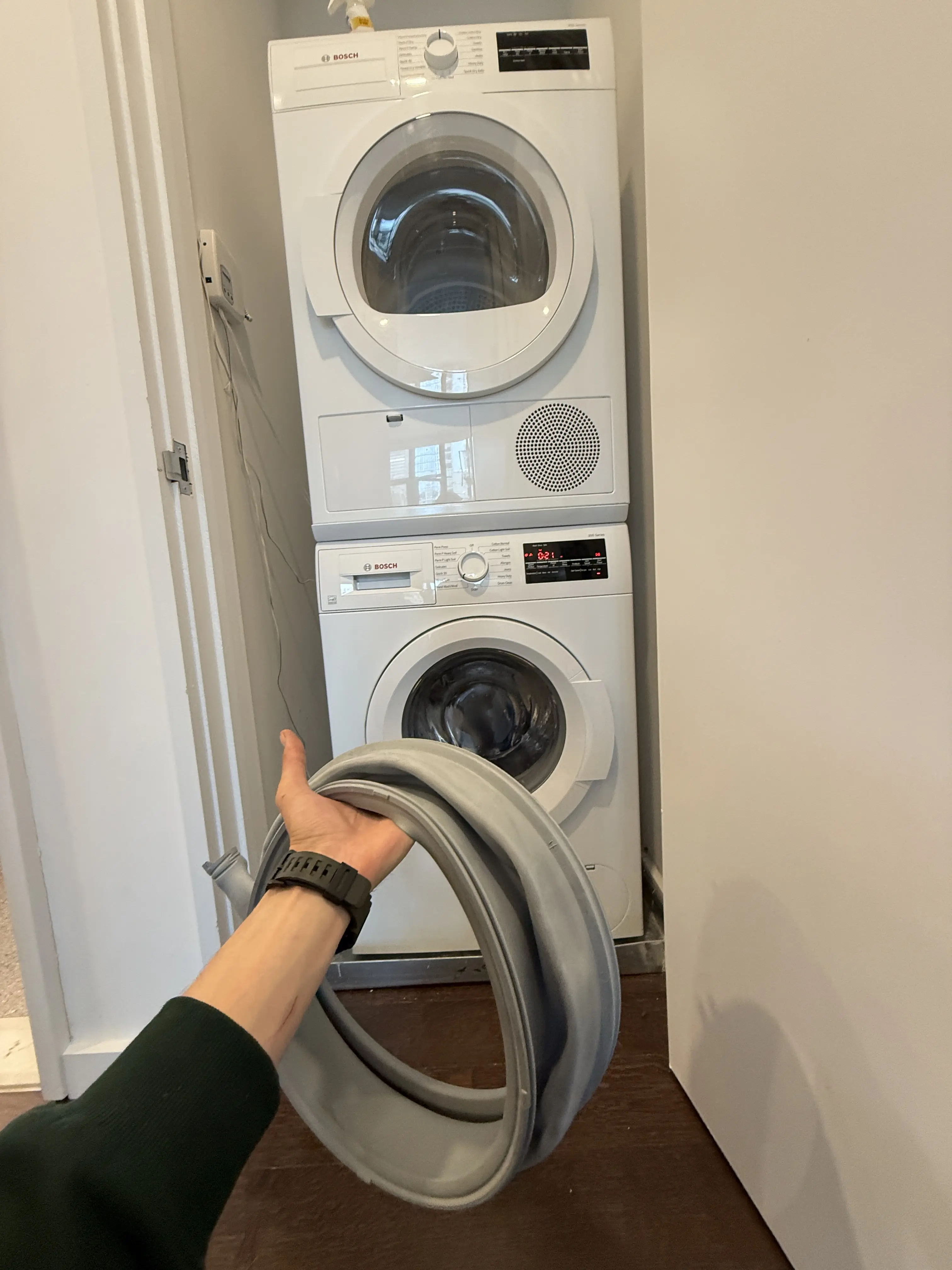
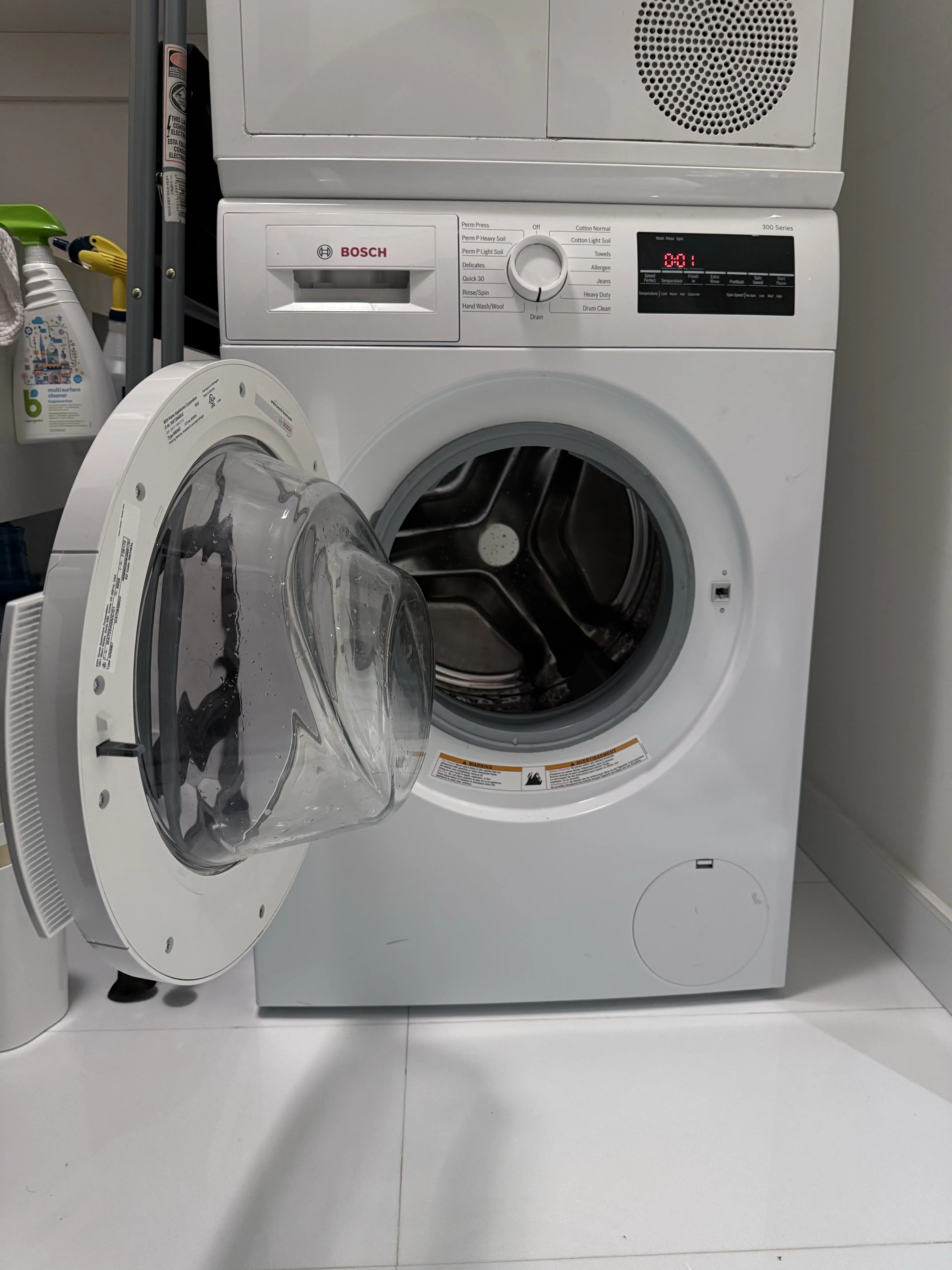

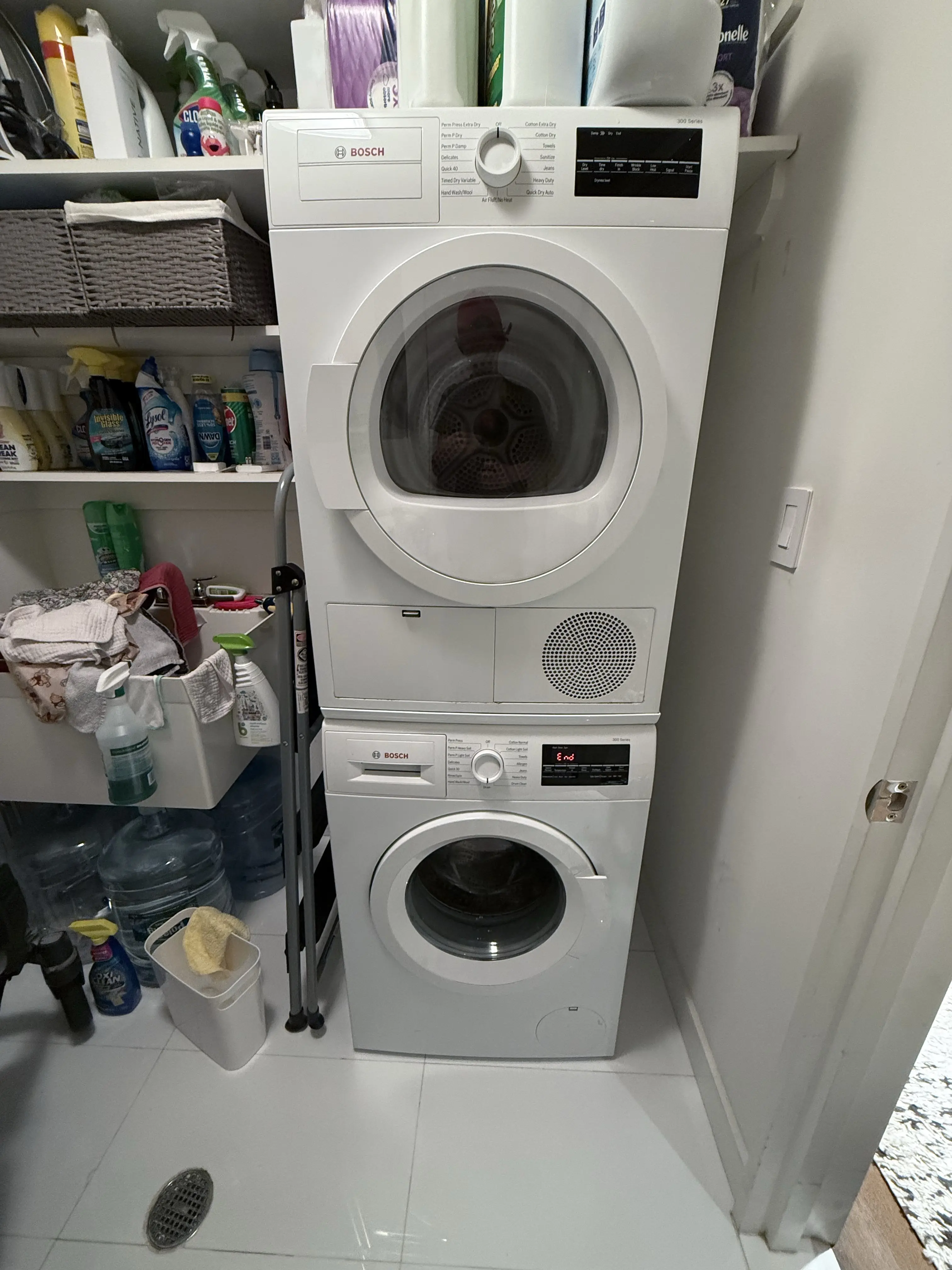
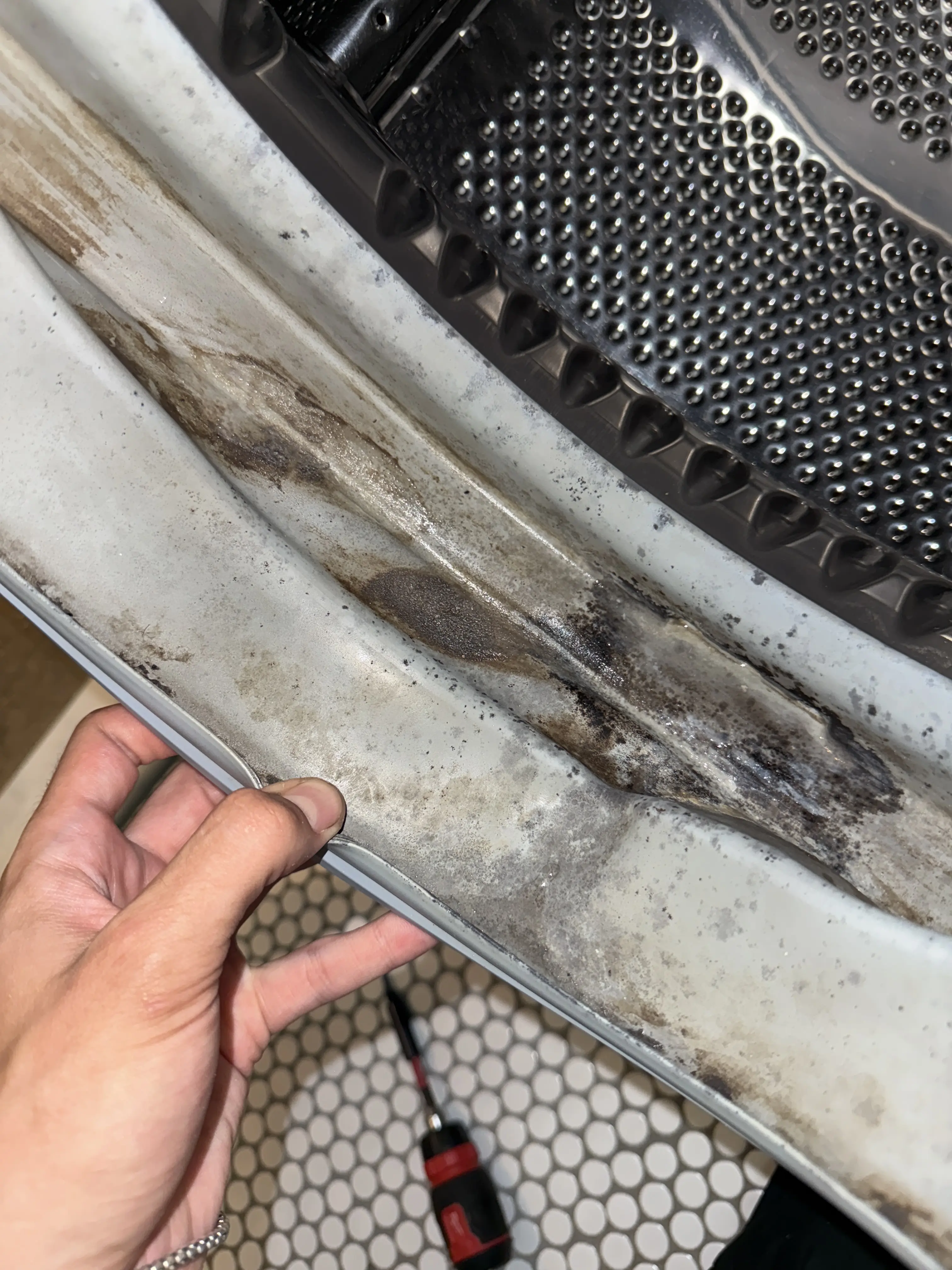
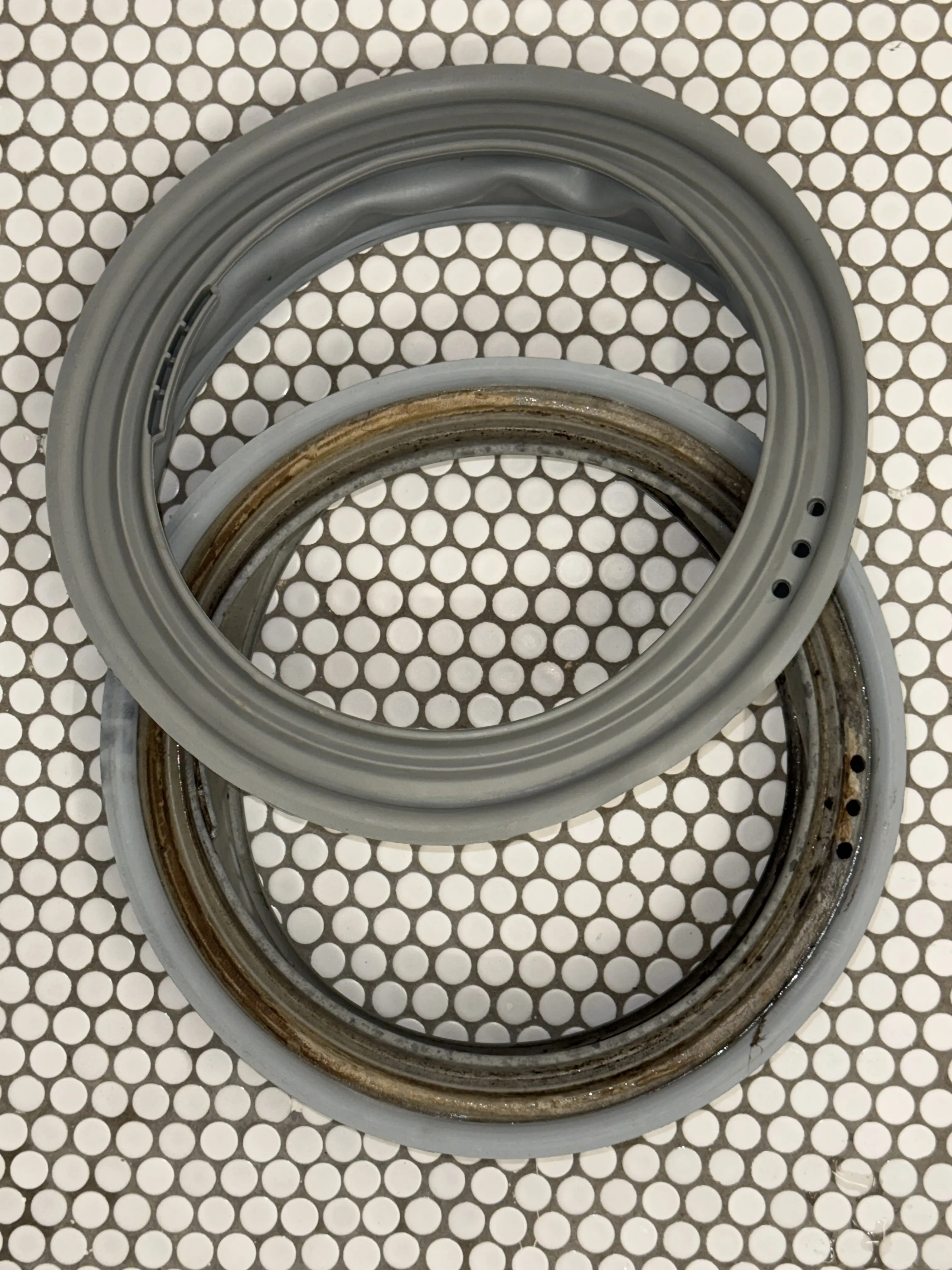

.avif)
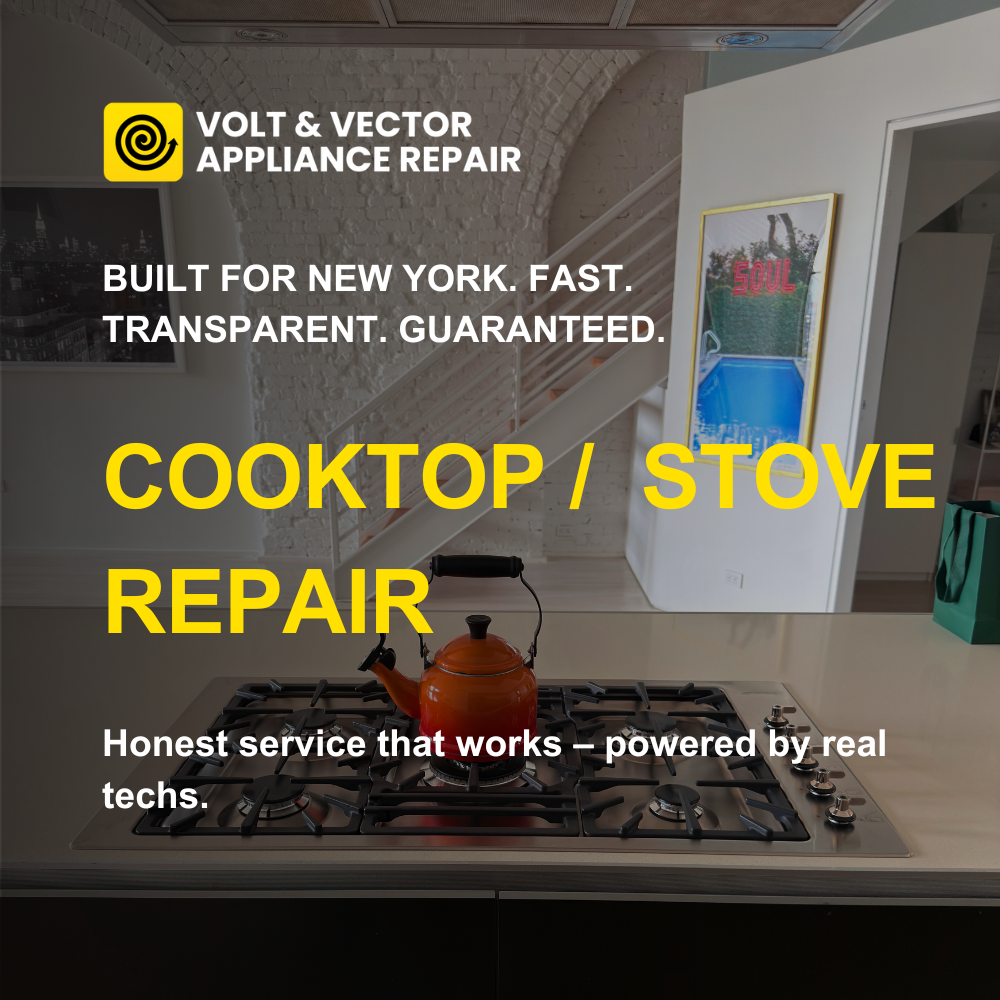
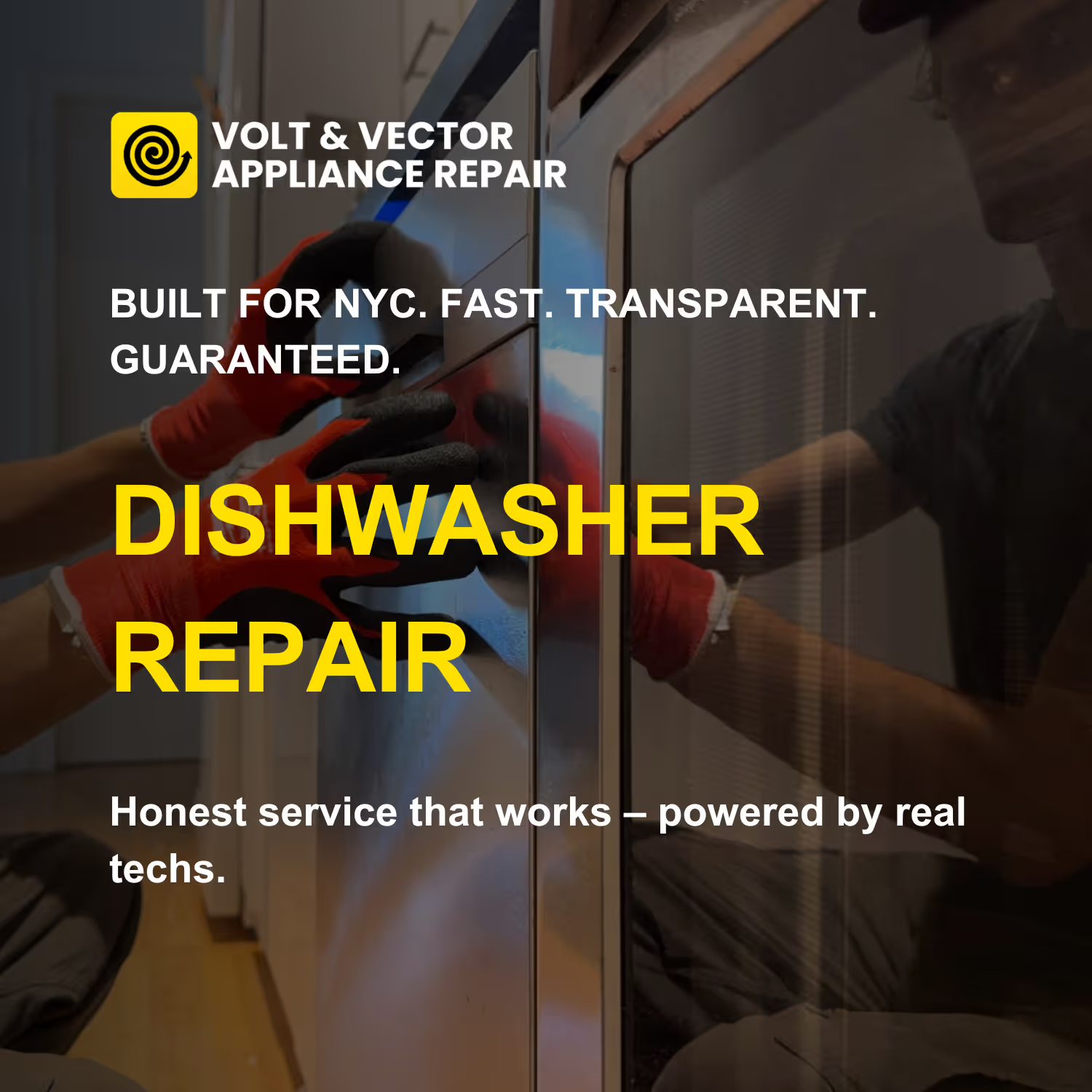
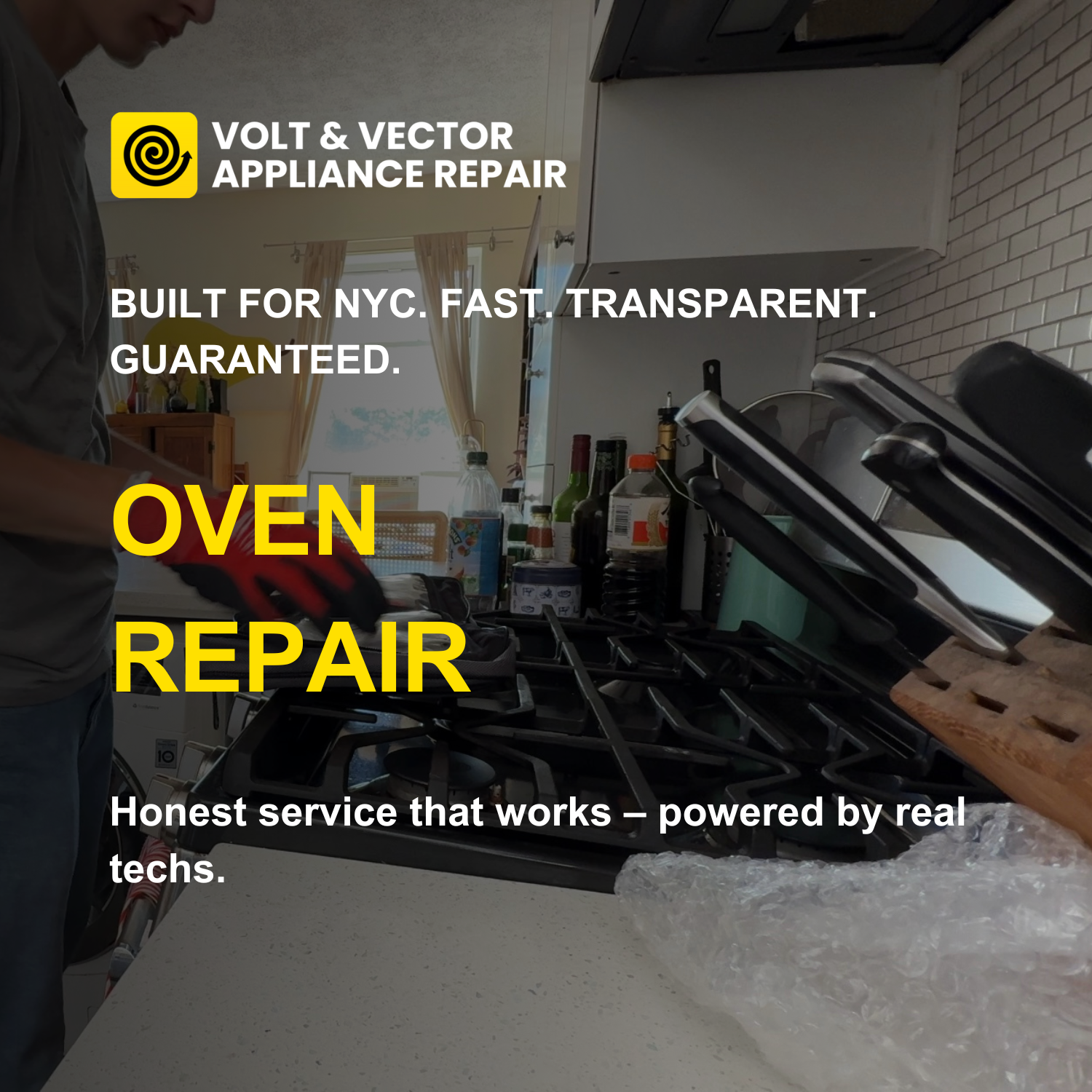

.avif)
.avif)
.avif)

.avif)
.avif)
